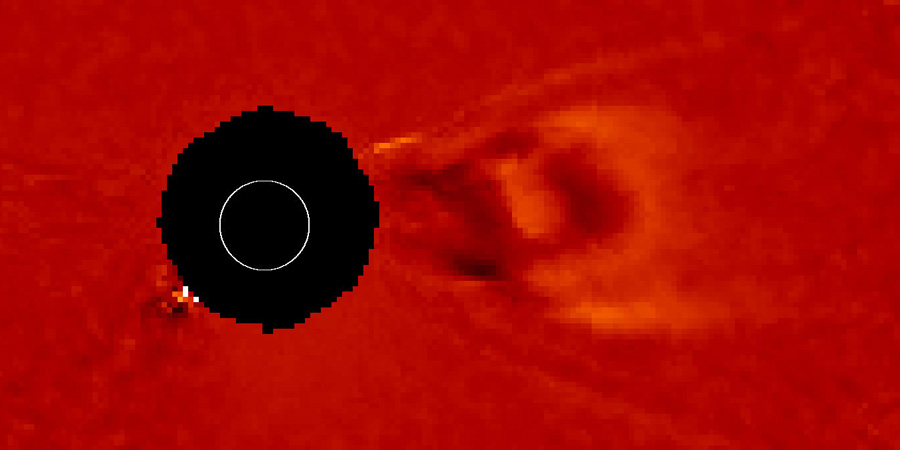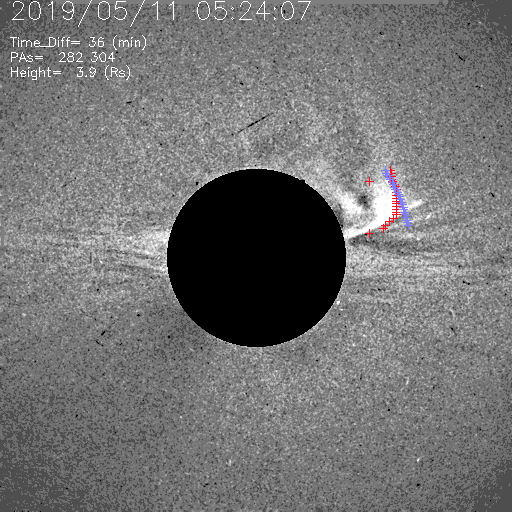Faint partial halo coronal mass ejection
Sunday, 12 May 2019 18:18 UTC

Sunspot region 2740 has been much less active as it has been decayed the past few days. But that didn't mean it went totally quiet. A minor eruption near the this sunspot region took place around midnight UTC yesterday and launched a faint partial halo coronal mass ejection that could arrive at Earth in a few days from now.
This isn't the first earth-directed coronal mass ejection from sunspot region 2740 but unlike the previous coronal mass ejection this event from 11 May is not a full halo event. This plasma cloud is a partial halo coronal mass ejection that covers about or just over 180 degrees on the SOHO/LASCO C2 coronagraph as you can see on the animation below if you look closely. This combined with the fact that sunspot region 2740 was facing Earth at the time of the eruption does mean that this cloud has a good chance of arriving at Earth. Coronagraph images from STEREO Ahead (header image) confirms this coronal mass ejection comes from the Sun's earth-facing side.

Animation: A faint partial halo coronal mass ejection as seen by the SOHO/LASCO C2 coronagraph instrument.
The speed of this coronal mass ejection is really low estimated to be around the 350km/s which is about the speed of the ambient solar wind. This gives us a possible arrival time for this event somewhere during the second half of 15 May which would be this Wednesday. Geomagnetic storming is unlikely for this event but it is again an event worth keeping an eye on for high latitude sky watchers with dark skies.
Thank you for reading this article! Did you have any trouble with the technical terms used in this article? Our help section is the place to be where you can find in-depth articles, a FAQ and a list with common abbreviations. Still puzzled? Just post on our forum where we will help you the best we can!
Latest news
Latest forum messages
Support SpaceWeatherLive.com!
A lot of people come to SpaceWeatherLive to follow the Sun's activity or if there is aurora to be seen, but with more traffic comes higher server costs. Consider a donation if you enjoy SpaceWeatherLive so we can keep the website online!

Space weather facts
| Last X-flare | 2025/03/28 | X1.1 |
| Last M-flare | 2025/03/31 | M1.2 |
| Last geomagnetic storm | 2025/03/27 | Kp5 (G1) |
| Spotless days | |
|---|---|
| Last spotless day | 2022/06/08 |
| Monthly mean Sunspot Number | |
|---|---|
| February 2025 | 154.6 +17.6 |
| March 2025 | 127 -27.6 |
| Last 30 days | 127 -25.7 |


